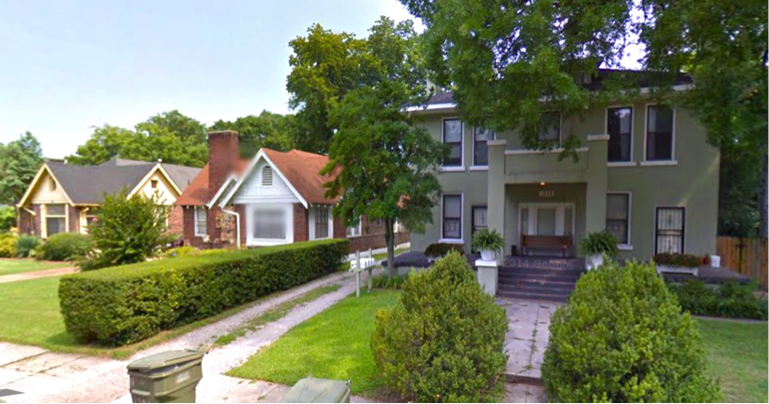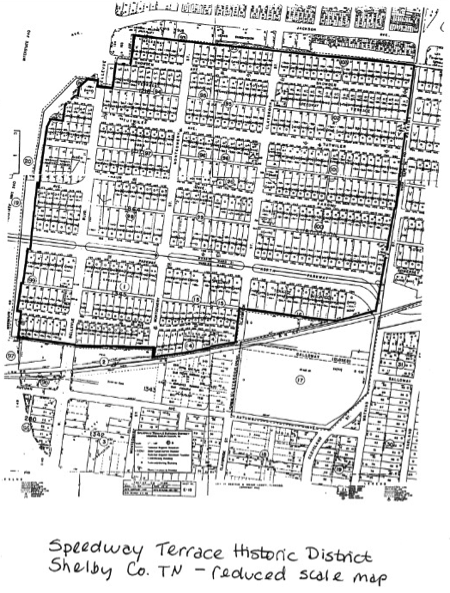History of Speedway Terrace Historic District

The Speedway Terrace Neighborhood is composed of approximately 21 blocks, 373 plats and 110 acres in Midtown Memphis, TN. The District is roughly bound by North Watkins Avenue on the East, Lick Creek on the North, the right of way for Interstate 240 North on the West, and the Crosstown Concourse on the South. The Districts’ boundaries are in line with the boundaries of the Speedway Terrace National Historic District as recorded in the National Registration of Historic Places upon its national designation in 1998. In November of 2017, residents petitioned the city to create a historic district overlay to protect the character and architecture of the area. The historic district overlay was approved by the Memphis City Council in May of 2018.
The majority of the structures in the district are single-family residences, although the area does contain multifamily dwelling units and several churches.
The Speedway Terrace neighborhood is significant for its architecture and community planning. It is a notable and substantially intact collection of middle-income residences built in Memphis during the first four decades of the twentieth century.
The most intensive development of the neighborhood began in 1905 in response to the development of Memphis’ Parkway System. The development and construction of Memphis’ Parkway System started in 1904, under the direction of George Kessler. A rectangular border was created around the city using existing streets. The north-lining avenue was known as the Speedway and is what is considered today to be North Parkway. Kessler had originally designed portions of the parkways to be tree-lined avenues where car and carriage owners could race against each other. Today, Speedway Terrace, along the area of North Parkway near Watkins serves as a reminder of the parkway’s racing past.
Initial development of Speedway Terrace was considered part of one of the largest real estate ventures of the time. The developers consisted of major figures in the creation of Midtown Memphis, including Finley Faxon and Robert Brinkley Snowden. The middle-class neighborhood was formed in part for “the encouragement of immigration, the locating, establishing and building of towns and cities” during a period of rapid expansion in Memphis.
In the 1920s, continued development as a residential neighborhood was spurred along by three nearby developments: the extension of North Parkway to connect with the downtown district, the relocation of Southwestern College to a new site on North Parkway, and the construction of the massive Sears, Roebuck and Company regional distribution warehouse at the south edge of the neighborhood. In 1920, notable early twentieth century home builder, William Cullen Chandler, developed a grouping of homes dubbed “Built-Rite” bungalows on Forrest Avenue. Their construction and detailing became the quality standard for other builders to emulate and aspire to as they competed with Chandler’s houses within the subdivision. Most development of Speedway Terrace was completed by 1929.

Outline of the Speedway Terrace Historic District.

Map of the district used in its National Register nomination.
